Women In Conservation
March 10, 2020
In honor of International Women’s Day, we wanted to highlight some of the women who’ve carried the conservation movement from its infancy to today.
Harriet Hemenway
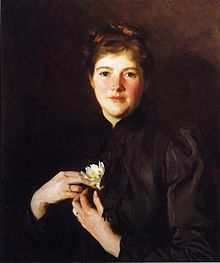
In the late 1800s, in response to a fashion demand for fancy plumes to decorate women’s hats, thousands of birds—woodpeckers, bluebirds, owls, herons, and warblers—were killed every year for their feathers.
In 1896, Hemenway and her cousin Minna B. Hall held tea parties for the wealthy women of Boston where they urged them not to wear feathered hats and invited them to join a society for the protection of birds. Having gained the support of many of these fashionable women, Hemenway and Hall then organized meetings between leaders of the high society and prominent New England ornithologists, paving the way for the creation of the Massachusetts Audubon society—which more than 900 women joined.
The women’s political power and reach became strong enough to push Massachusetts to pass a law banning the trade in wild bird feathers. Other states followed Massachusetts’ lead, and finally in 1913, the plume trade was ended through a federal law known as the Weeks-McLean Bill.
Celia Hunter
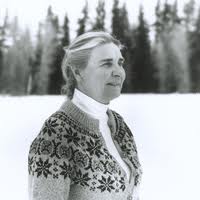 Celia Hunter was an Air Force pilot who, during World War II, flew planes from factories to training centers and ports of embarkation throughout the U.S. However, the military wouldn’t allow women to fly planes to Alaska. Hunter and her good friend and fellow pilot Ginny Hill Wood decided that they would get to Fairbanks on their own. They made a deal with an Alaskan pilot who was in Seattle to fly two of his planes to Fairbanks. In 1946, they piloted two planes in a harrowing 27-day trip from Seattle to Fairbanks.
Celia Hunter was an Air Force pilot who, during World War II, flew planes from factories to training centers and ports of embarkation throughout the U.S. However, the military wouldn’t allow women to fly planes to Alaska. Hunter and her good friend and fellow pilot Ginny Hill Wood decided that they would get to Fairbanks on their own. They made a deal with an Alaskan pilot who was in Seattle to fly two of his planes to Fairbanks. In 1946, they piloted two planes in a harrowing 27-day trip from Seattle to Fairbanks.
Hunter fell in love with the rugged beauty of Alaska, and started a travel agency, leading sight-seeing tours of the arctic wilderness. Later on, she founded Alaska’s first statewide environmental group, the Alaskan Conservation Society, which played a role in creating the Arctic National Wildlife Refuge (ANWR). Hunter served as the executive director of the Wilderness Society and she helped push Congress to pass the 1980 Alaska National Interest Lands Conservation Act, which doubled the size of the national refuge system.
The night before her death, at the age of 82, Hunter had been up late writing letters to Congressmen urging them to protect ANWR from oil drilling.
Rachel Carson
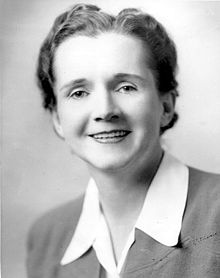 Rachel Carson was a marine biologist who worked for the U.S. Fish and Wildlife Service in 1943, but it was not until she resigned in 1952 to continue her writing career that she made groundbreaking changes to the conservation world. Her bestselling book, Silent Spring, brought the environmental movement to the mainstream by documenting the detrimental effects of pesticides on the environment and highlighting the need for regulations.
Rachel Carson was a marine biologist who worked for the U.S. Fish and Wildlife Service in 1943, but it was not until she resigned in 1952 to continue her writing career that she made groundbreaking changes to the conservation world. Her bestselling book, Silent Spring, brought the environmental movement to the mainstream by documenting the detrimental effects of pesticides on the environment and highlighting the need for regulations.
Although Silent Spring was met with fierce opposition by chemical companies, it spurred a reversal in national pesticide policy, which led to a nationwide ban on DDT and other pesticides. It also inspired a grassroots environmental movement that led to the creation of the U.S. Environmental Protection Agency.
Wangari Maathai
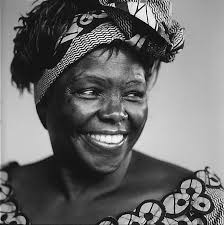 Born in Kenya but educated in the U.S. and Germany, Maathai became involved in a number of civic organizations in the early 1970s. She was a member of the Nairobi branch of the Kenya Red Cross Society, becoming its director in 1973. Following the establishment of the Environment Liaison Centre in 1974, Maathai was asked to be a member of the local board, eventually becoming board chair. She also joined the National Council of Women of Kenya. Through her work at these various volunteer associations, it became evident to Maathai that the root of most of Kenya’s problems was environmental degradation.
Born in Kenya but educated in the U.S. and Germany, Maathai became involved in a number of civic organizations in the early 1970s. She was a member of the Nairobi branch of the Kenya Red Cross Society, becoming its director in 1973. Following the establishment of the Environment Liaison Centre in 1974, Maathai was asked to be a member of the local board, eventually becoming board chair. She also joined the National Council of Women of Kenya. Through her work at these various volunteer associations, it became evident to Maathai that the root of most of Kenya’s problems was environmental degradation.
In 1977, Maathai founded the Green Belt Movement, an environmental non-governmental organization focused on the planting of trees, environmental conservation, and women’s rights. In 1984, she was awarded the Right Livelihood Award, and in 2004, she became the first African woman to receive the Nobel Peace Prize for her contribution to sustainable development, democracy, and peace.
Marjory Stoneman Douglas
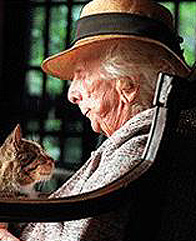 Marjory Stoneman Douglas was an American journalist, author, women’s suffrage advocate, and conservationist known for her staunch defense of the Everglades against efforts to drain it and reclaim land for development.
Marjory Stoneman Douglas was an American journalist, author, women’s suffrage advocate, and conservationist known for her staunch defense of the Everglades against efforts to drain it and reclaim land for development.
Douglas became involved in the Everglades in the 1920s, when she joined the board of the Everglades Tropical National Park Committee, a group dedicated to the idea of making a national park in the Everglades. Her book Everglades: River of Grass—published in 1947, the same year that Everglades National Park was established—helped shape how people viewed this area as a natural treasure rather than a worthless swamp.
By the 1960s, the Everglades were in imminent danger of disappearing forever because of gross mismanagement in the name of progress and real estate and agricultural development. In 1969—at the age of 79—Douglas founded Friends of the Everglades to protest the construction of a jetport in the Big Cypress portion of the Everglades. She justified her involvement saying, “It is a woman’s business to be interested in the environment. It’s an extended form of housekeeping.”
next post
Oak Bark
February 23, 2020
by Tim Burris, Preserve Manager. The dominant oak species at Mariton are White Oak (Quercus alba), Red Oak (Q. rubra), Black Oak (Q. velutina), and […]
continue reading